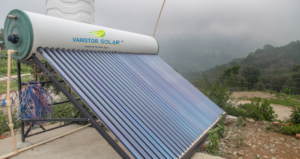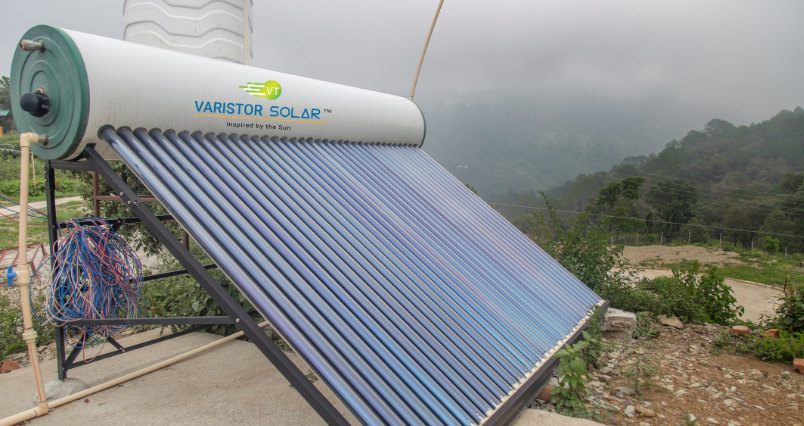Designing a Low-Cost, Energy-Efficient Solar Water Heater: Sustainable Solutions for Affordable Heating
As the world grapples with the challenges of climate change and rising energy costs, the need for sustainable and energy-efficient solutions has never been more urgent. Solar water heating systems have emerged as an environmentally friendly and cost-effective alternative to traditional water heaters. However, the high upfront costs of these systems often make them inaccessible to many households. This article explores how to design a low-cost, energy-efficient solar water heater that can make solar energy more accessible to a broader range of consumers while promoting sustainability.
What is a Solar Water Heater and Why Is It Important?
A solar water heater (SWH) is a device that uses sunlight to heat water, providing a renewable energy solution for residential and commercial hot water needs. By harnessing the sun’s energy, these systems can significantly reduce reliance on fossil fuels and lower energy bills. Solar water heaters are particularly beneficial in regions with abundant sunshine, where they can provide hot water throughout the year with minimal maintenance and operating costs.
- Key Benefits of Solar Water Heaters:
- Reduced Energy Bills: Solar water heaters lower the need for electricity or gas to heat water, resulting in long-term cost savings.
- Environmental Impact: By using solar energy, these systems reduce greenhouse gas emissions and contribute to a cleaner, more sustainable environment.
- Low Operating Costs: Once installed, solar water heaters have minimal ongoing maintenance and operational costs.
Designing a Low-Cost, Energy-Efficient Solar Water Heater
When designing a low-cost, energy-efficient solar water heater, several key factors must be considered, from selecting materials and components to optimizing the system’s performance. Here are the key elements involved in designing a cost-effective solar water heating system:
1. Choosing the Right Solar Collectors
Solar collectors are the components that capture sunlight and convert it into heat. There are two main types of solar collectors used in solar water heaters: flat-plate collectors and evacuated tube collectors.
- Flat-Plate Collectors: These are the most common and cost-effective choice for residential applications. They consist of a metal absorber plate that captures sunlight, a transparent cover to reduce heat loss, and insulation to prevent heat from escaping. Flat-plate collectors are ideal for moderate climates and are simpler to manufacture.
- Evacuated Tube Collectors: These collectors are more efficient at capturing heat, especially in colder climates. They consist of a series of glass tubes with a vacuum between them, which prevents heat loss. While more efficient, evacuated tube collectors tend to be more expensive and require more advanced materials.
For a low-cost design, flat-plate collectors are typically the most viable option. They offer a balance between affordability and performance, making them ideal for regions with sufficient sunlight and moderate temperatures.
2. Selecting an Efficient Water Storage Tank
The water storage tank is an essential component of a solar water heater, as it stores the heated water until it is needed. To maximize energy efficiency, the tank must be well-insulated to prevent heat loss.
- Material Selection: Insulated storage tanks are typically made from materials like stainless steel, glass-lined steel, or polyethylene. Stainless steel tanks are durable and corrosion-resistant but can be more expensive. Polyethylene tanks, on the other hand, are lightweight and affordable but may have a shorter lifespan.
- Sizing the Tank: The size of the storage tank should be based on the household’s hot water needs. For a typical family of four, a 150-200-liter tank is usually sufficient. Oversizing the tank can lead to unnecessary costs, while undersizing may result in insufficient hot water.
For a low-cost design, a polyethylene tank with a high-quality insulation material like polyurethane foam can provide an affordable, energy-efficient solution.
3. Optimizing the System’s Piping and Heat Transfer Efficiency
The efficiency of a solar water heater depends not only on the collectors and storage tank but also on the quality of the piping and heat transfer components. To enhance energy efficiency, the following factors should be considered:
- Material Selection for Piping: Copper and aluminum are commonly used for heat exchange piping due to their excellent thermal conductivity. However, these materials can be expensive. An alternative is using plastic pipes like PEX (cross-linked polyethylene), which are more affordable but still offer good heat transfer properties.
- Pump Selection: If the solar water heating system is a closed-loop design (where water is circulated through the system), a pump is needed to move the water between the collector and the storage tank. Low-power, energy-efficient pumps should be selected to keep operating costs low.
- Heat Transfer Fluid: In active systems, a heat transfer fluid (usually an antifreeze solution) circulates through the collectors. This fluid should have a low freezing point and good heat transfer capabilities to maximize the system’s efficiency.
4. Incorporating a Backup Heating System
While solar water heaters can provide hot water year-round in sunny climates, there may be times when solar energy is insufficient, such as during cloudy weather or winter months. To ensure a constant supply of hot water, a backup heating system can be integrated into the design.
- Electric or Gas Backup Heaters: A low-cost backup system can be incorporated to provide supplementary heat when solar energy is not available. These backup systems should be energy-efficient and only activated when necessary, ensuring that the solar heater remains the primary source of heating.
- Hybrid Systems: Some designs incorporate hybrid solutions, such as a heat pump or a combination of solar and electric systems, to optimize energy efficiency and reduce operational costs.
5. Installation and Maintenance Considerations
The installation process for a solar water heater is crucial to its performance and longevity. To keep costs low, the system should be easy to install with minimal expertise required. Additionally, the system should be designed with low maintenance in mind to reduce long-term costs.
- Ease of Installation: Simplifying the installation process can help reduce labor costs. For example, pre-assembled collector panels and modular components can make installation quicker and easier.
- Maintenance Requirements: Regular cleaning of the collectors and checking the fluid levels in the system are essential for maintaining optimal performance. Designing the system with easy access to key components can reduce maintenance time and costs.
Cost-Effective Materials and Construction Techniques
To keep the overall cost of the solar water heater low, it is important to use affordable yet durable materials. Here are a few strategies for reducing costs without compromising performance:
- Recycled Materials: Using recycled materials for components such as the frame or cover can significantly reduce costs. For example, using recycled aluminum for the collector frame or plastic for insulation can lower material expenses.
- Simplified Design: Simplifying the design by reducing the number of components or opting for less complex technologies can make the system more affordable. For example, opting for a passive solar water heater (which doesn’t require pumps or electrical components) can cut costs significantly.
- Local Manufacturing: Sourcing materials locally and using local manufacturers for production can help reduce shipping costs and support the local economy.
Conclusion: Achieving Sustainability and Affordability
Designing a low-cost, energy-efficient solar water heater is an achievable goal with careful consideration of materials, design, and system components. By selecting affordable solar collectors, high-efficiency storage tanks, and optimized piping systems, it is possible to create a reliable and sustainable heating solution that benefits both consumers and the environment.
As the demand for renewable energy solutions continues to grow, developing affordable and accessible solar water heaters will play a crucial role in making clean energy more accessible to everyone, regardless of economic status. With the right approach, solar water heating can become a cornerstone of sustainable living, helping to reduce energy consumption and minimize the environmental impact of traditional water heating methods.

Also Read :
- Engineering Energy Storage Solutions for a Carbon-Free Future
- Harnessing Ocean Currents: Research into Marine Energy Technologies
- Hydrogen Fuel Cells: Engineering Cleaner Energy Systems
- The Future of Renewable Energy: Advancements in Solar Panel Efficiency
- How Renewable Energy Technology is Gaining Ground in South Africa
